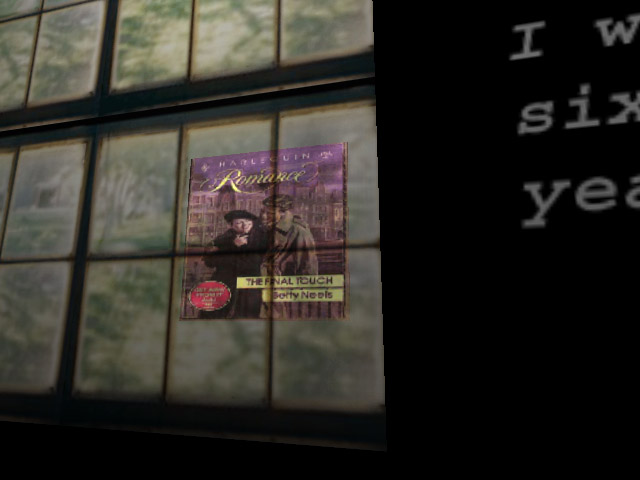
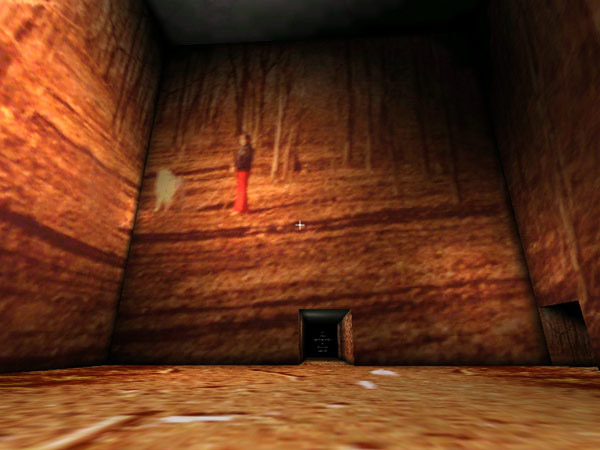
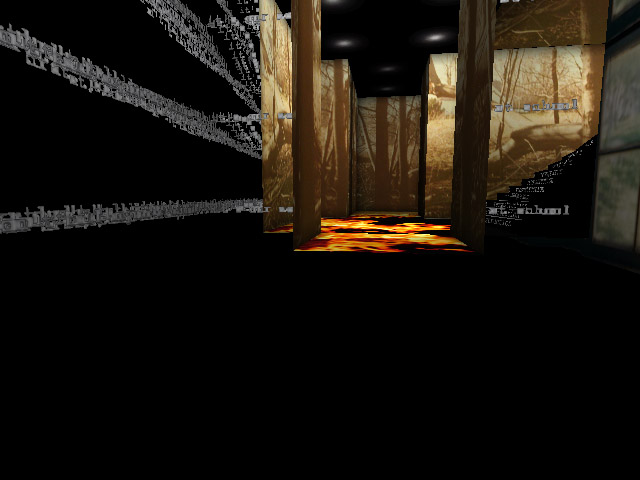
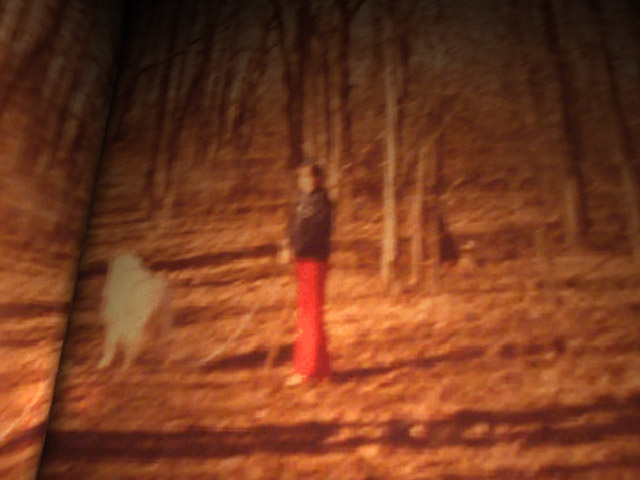
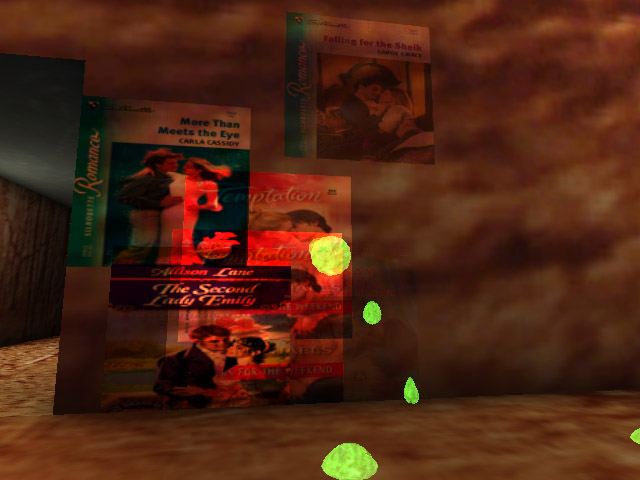
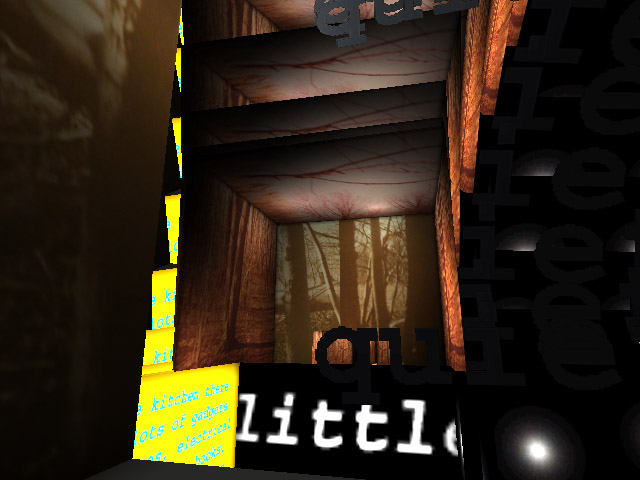
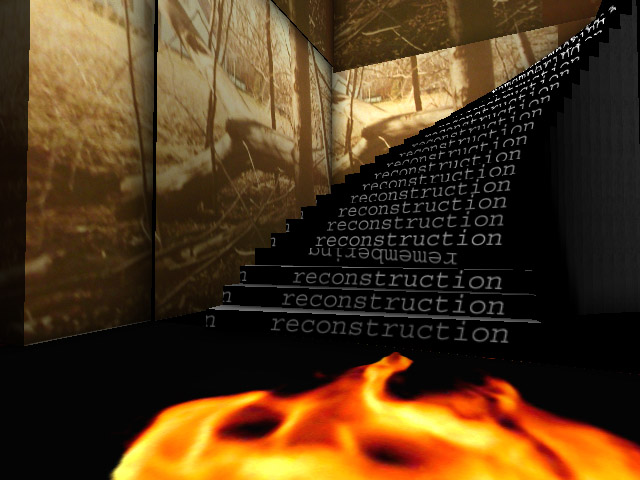
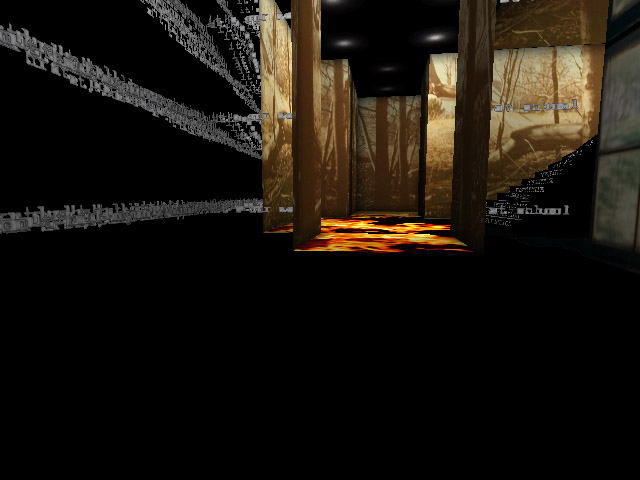
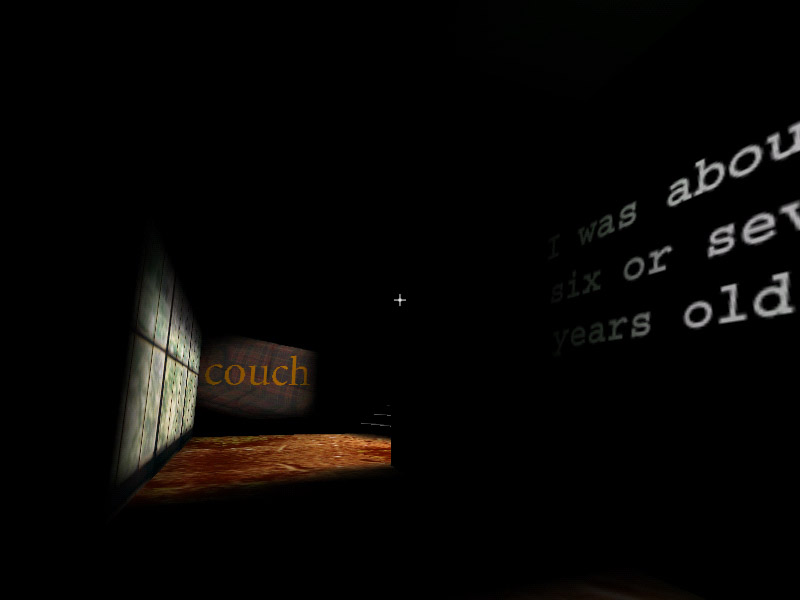
Video
[domestic]
Controller, computer, projection, software
dimensions variable
2003
[domestic] uses a software engine normally used to generate violent first-shooter video games in order to reconstruct a remembered childhood space where a dramatic event has taken place: a house fire.
The participant navigates an oddly constructed domestic space that is actually a map encompassing the inside and outside of Flanagan’s childhood home and surrounding environment. Spaces alternate between claustrophobic hallways and rooms with seemingly endless ceilings, breaking with the visual conventions of 3D gaming in its more predictable interpretation of physical space. In [domestic], participants encounter an ambiguous rendering of scale. Family snapshots and shifting, morphing unstable texts line the surfaces of the space. The snapshots, soft-focus images of typical domestic scenes, are projected overwhelmingly large, bringing the perceived scale of doorways and rooms into question. The perfectly crisp and squared walls typical of computer game geometries further abstract the sense of space.
Players encounter fire in the space and are able to shoot “coping mechanisms” at the walls and at the growing fire in order to contain these as they threaten to consume the world and the player. These mechanisms are manifested as book covers from romance novels, popular as an escape from the mundane aspects of domestic life.
[domestic] functions as both a virtual, interactive installation and a flexible means of storytelling, where the navigator is free to explore and linger. There is a subtle anxiety between traditional 3D game conventions and discovery in the highly stylized nature of the [domestic] experience.The ‘house’ depicted is less a physical space as a psychic one, a container for memory, with texts lining and extruding from walls. Recalling simple childhood memories (“it was springtime. A little muddy”), the world offers conflicting impressions and suggests a gap in memory (for example, a staircase built from the word ‘reconstructed’).
The work provokes the questions, what are the ways space and memory are cognitively tied and can such ties be re-experienced? What role, if any, does narrative and memory have in contemporary computer games? How can we ‘see’ memory?
Read about [domestic] in the 2006 book New Media Art
Exhibitions
- HACKING/MODDING/REMIXING as Feminist Protest, Miller Gallery, Carnegie Mellon University, Pittsburgh, Pennsylvania, January 29 – Feb 26 2017
- ZKM_Gameplay exhibition, Karlsruhe, Germany, JUNE 21 2013 – 2014
- video of the exhibition
- exhibition catalog (in German; English forthcoming).
- Play Station Exhibition, Postmasters Gallery, New York, New York, December 2011
- Gameworld Exhibition, Laboral Art Center, Asturias, Spain, March – July 2006
- Microwave International Media Art Festival, Hong Kong, October 2005
- ARCO exhibition, Milan, Italy, February 2005
- Gigantic Art Space Gallery, New York, New York, June 16 – July 10 2004
- ArtMods, IDGA Games Developer Conference, San Jose, California 2004
- Playthings Exhibition Premier (organized by DLux media|arts), Sydney, Australia, October 2003
Additional Credits
- Andrew Gerngross, weapons designer
